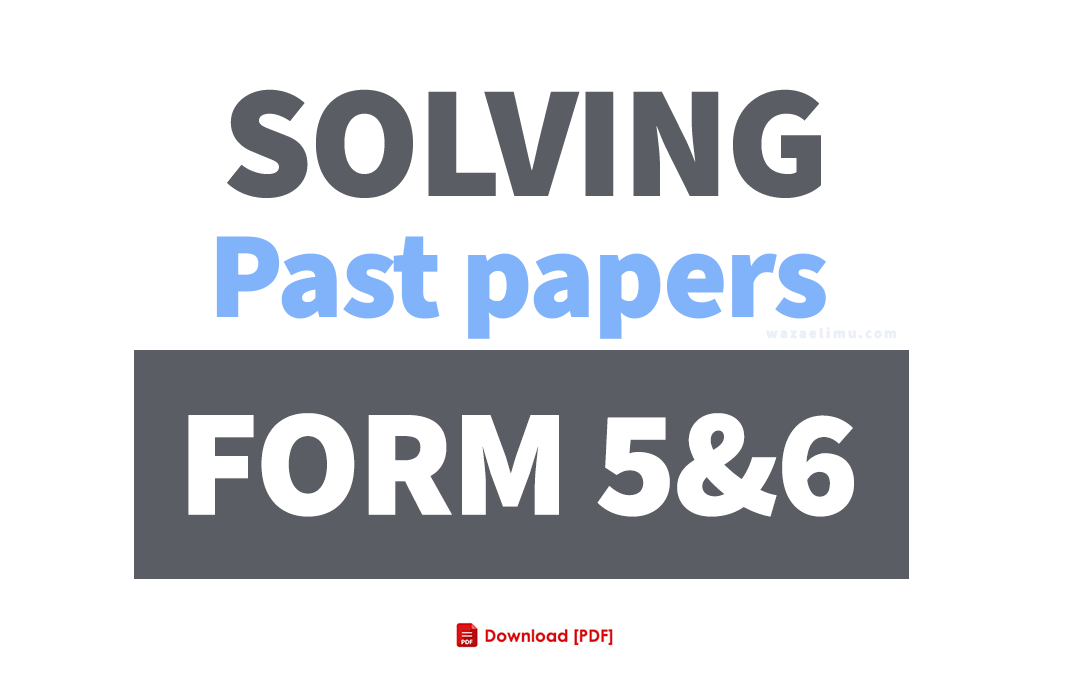
Welcome to Wazaajira.com, are you looking for form six past papers with Marking Schemes (solved)? Download past Papers on Wazaajira.com for free in PDF format. Mock past papers are essential for preparation for ACSEE (Advanced Level) Examination Conducted by National Examination Council of Tanzania (NECTA).
What is a Planet?
Planets are bodies that revolve around the sun. The planets of our solar system are Mercury, Venus, Earth, Mars, Jupiter, Saturn, Uranus and Neptune.
The first four planets from the sun are inner planets whereas the remaining four are outer planets because they are located further away from the sun. These planets have specific positions in the solar system. As they revolve around the sun, they appear to move among the stars. That is why the Greeks called them planets, which means “wandering stars”.
All planets revolve around the sun on the same plane and direction, each following its own orbit. The time it takes for a planet to complete orbiting the sun depends on its distance from the sun. Light and heat on the planet come from the sun.
Hence, the temperature on the planets depends on their relative distances from the sun.
Mercury
Mercury revolves at a distance of about 58 million kilometres from the sun. It is the closest planet to the sun and the smallest planet in our solar system. Its average surface temperature is 430 C. It is called a boiling planet because of its closeness to the sun which is extremely hot. This planet has no natural satellite. Venus
Venus revolves at a distance of about 108 million kilometres from the sun. Its size is close to that of the planet Earth.
It is the second planet from the sun. This planet has no natural satellites. It is the hottest planet, with an average surface temperature of 462 ℃, most likely because of the high amount of greenhouse gases in its atmosphere.
Earth
The planet Earth revolves at a distance of about 150 million kilometres from the sun. It has an average surface temperature of 15C.It is the only planet in the universe known to have geological and biological activities. Therefore, the earth is the only planet which supports life. The earth has one natural satellite known as the moon.
Mars
Mars revolves at a distance of about 228 million kilometres from the sun. It is smaller than the earth and venus. Its atmosphere is mainly composed of carbon dioxide and it has two natural satellites.
Jupiter
This planet revolves at a distance of about 778.5 million kilometres from the sun. Its atmosphere is composed of helium gases. It is the largest planet in the solar system. It has 79 natural satellites.
Saturn
This planet revolves at a distance of about 1,434 million kilometres from the sun. It is distinguished by its extensive ring system and has 62 natural satellites.
The ring system is composed of solid materials such as dust. The ring system is a distinctive feature of the planet.
GUTAMA FORM SIX PRE-NATIONAL EXAMINATIONS MARCH 2024
AGRICULTURE
CHINESE
GENERAL STUDIES
LANGUAGE
GEOGRAPHY
CHEMISTRY
ACCOUNTANCY
COMMERCE
BIOLOGY
ADVANCED MATHEMATICS
BAM
